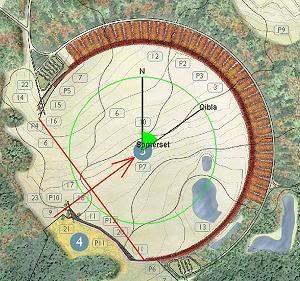Monday Maritime Matters
December 17th, 2007 by xformed
Posting is a little light due to the seasonal thing, side work and finally getting all parts assembled for Beast II and the time it took to get the OS and stuff loaded…HOWEVER…
I will be posting a tribute to a maritime hero (pictured below) by this afternoon. Which one is it you wonder….



Isaac Campbell Kidd was born in Cleveland, Ohio, on 26 March 1884. He entered the U.S. Naval Academy in 1902, graduating with the Class of 1906 in February of that year, and was commissioned an Ensign in 1908. Kidd participated in the 1907-09 “Great White Fleet” cruise around the World while serving in USS New Jersey (BB-16) . Following service in USS North Dakota (BB-29) and USS Pittsburgh (Armored Cruiser # 4), he became Aide and Flag Secretary to the Commander in Chief, Pacific Fleet, the first of his many flag staff assignments. He was an instructor at the Naval Academy in 1916-17.
During and after the First World War, Kidd was stationed on USS New Mexico (BB-40), then had further staff and Naval Academy service. He was executive officer of the battleship Utah (BB-31) in 1925-26, then commanded USS Vega (AK-17) until becoming Captain of the Port at Chrisobal, Panama Canal Zone in 1927-30. Promoted to the rank of Captain, he was Chief of Staff to Commander, Base Force, U.S. Fleet in 1930-32. After three years at the Bureau of Navigation in Washington, D.C., he was Commander Destroyer Squadron ONE, Scouting Force, in 1935-36.
Captain Kidd next attended the Naval War College and served on the College staff. He was Commanding Officer of USS Arizona (BB-39) from September 1938 until February 1940, when he was promoted to Rear Admiral and assigned as Commander Battleship Division ONE and Chief of Staff to Commander, Battleships, Battle Force. On 7 December 1941, he was killed in action on board Arizona during the Pearl Harbor Raid . Rear Admiral Isaac C. Kidd was posthumously awarded the Medal of Honor for his actions during the Pearl Harbor attack .
His detailed biography on the web is located here.
The Medal of Honor citation reads:
CITATION:
Rank and organization: Rear Admiral, U.S. Navy. Born: 26 March 1884, Cleveland, Ohio. Appointed from: Ohio. Citation: For conspicuous devotion to duty, extraordinary courage and complete disregard of his own life, during the attack on the Fleet in Pearl Harbor, by Japanese forces on 7 December 1941. Rear Adm. Kidd immediately went to the bridge and, as Commander Battleship Division One, courageously discharged his duties as Senior Officer Present Afloat until the U.S.S. Arizona, his Flagship, blew up from magazine explosions and a direct bomb hit on the bridge which resulted in the loss of his life.
His remains are aboard the USS ARIZONA. His Naval Academy ring was found fused into the bulkhead of the bridge by Navy divers.
To honor this man who served in the two World Wars, three ships have been named for him:

The KIDD’s first voyage was one of some notoriety. Under the command of Cdr. Allan B. Roby, the destroyer moved across New York Harbor for delivery to the Brooklyn Naval Shipyards . . . flying the skull and crossbones of the Jolly Roger high from the foremast. The edition of TIME magazine that week carried a photo of KIDD, announcing that it had been one hundred years since the Jolly Roger had flown in New York Harbor. The crew quickly adopted the pirate Captain Kidd—who ironically hailed from New York—as their mascot and hired a local cartoonist to paint the famed buccaneer’s image high of the forward smokestack. Not wishing to dishonor RADM Kidd, however, the crew obtained permission from Mrs. Kidd first. The Admiral’s nickname at the Naval Academy had
been “Cap” (as in “Captain Kidd”) and he had gone by this nickname his entire life. So on the crew’s behalf, Mrs. Kidd obtained official permission from the powers-that-be in the Navy for them to paint the pirate on the stack and fly the Jolly Roger. The KIDD would become the only vessel in the history of the United States Navy to ever have such leave granted to fly the flag of piracy.
Another unique distinction about KIDD’s first voyage was the make-up of her crew. Anne Randle was the first member of the WAVES (Women Accepted for Voluntary Emergency Service) to be assigned to the Office of Shipbuilding in New York City. Ordered to take a training tour of the Kearny Shipyards, her name was placed on the list of personnel that were scheduled to report on board KIDD for the purpose of accompanying the destroyer across the harbor to the Brooklyn Naval Shipyards. Her name was listed as “Ens. A. Randle”, omitting any mention of her gender. At that time, there was still an uneasy tradition that having a woman aboard a naval ship was to invite bad luck. However, when KIDD arrived at the Brooklyn yards, the official message sent back to the yards in Kearny read: “The WAVE delivered The Kidd at 2:30 today.”
Commissioned into service two months later on April 23, KIDD commenced her shakedown cruise at Casco Bay, Maine. She saw her first duty covering the North Atlantic sea lanes near Argentia, Newfoundland. She then provided escort for new carriers during their shakedown cruises from Norfolk to Trinidad. In August of 1943, she transited the Panama Canal along with three other destroyers providing escort for USS ALABAMA (BB-60) and SOUTH DAKOTA (BB-57) and proceeded to Pearl Harbor.
During a simulated torpedo attack in September of that year, KIDD was struck by two star-shells fired from the NORTH CAROLINA (BB-55). As fortune had it, her forward damage control party was exercising in the immediate vicinity with a make-believe casualty strapped into a stretcher. One of the shells entered the compartment and crossed just above the chest of the pretended casualty. The sailor suffered a minor abrasion from a fleck of debris. The skipper reported to the task force commander: “KIDD claims to be the best prepared ship in the Navy. We had a victim already strapped in the stretcher when he was wounded.”
[…]
The history, in detail, continues here.
Serving in the North Atlantic, then the Pacific theaters, she participated in battles from Wake Island to Okinawa, suffering a kamakazi hit on April 11th, 1945. 38 died and 55 were wounded, but she was repaired and returned to service. Placed in reserve in 1946, she was activated in 1951 for the Korean War. Conducting NGFS shore bombardment duties and pilot rescue operations, she also stood into Wonson Harbor to draw fire from the camouflaged shore batteries. The remainder of the 50s were spent making Pacific Fleet deployments.
Decommissioned in 1964, she had earned 8 battle stars for WWII and 4 for Korea. She now is a floating museum in Baton Rouge, LA.


Category: History, Maritime Matters, Military, Military History, Navy | 2 Comments »








